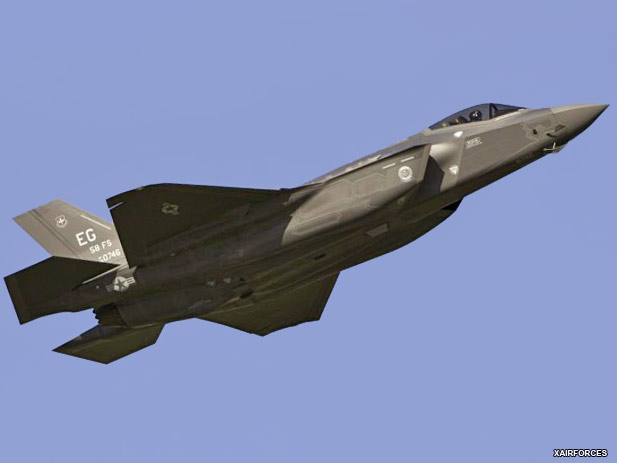
A Tough Sell For Australia

The top salesman for the Lockheed Martin F-35 Joint Strike Fighter JSF program, Mr. Burbage, is in Australia to brief Defence stake holders.
Mr. Burbage still parrots the notion that the aircraft can be had for $65 million (average) each over the life of the program.
Given all the evidence, this is just wishful thinking. This flies right over the heads of the usual suspects; unnoticed. Or is it that the usual suspects are unwilling to believe any different because their pay check depends on it?
Here is why Mr. Burbage and the senior Defence cabal pushing this Ponzi scheme on the Australian taxpayer are wrong.
The F-35 JSF is not lethal. For Australia, this means that for the outrageous amounts of money spent on air-to-air and air-to-ground fighting capability, the F-35 JSF brings nothing to the table that existing aircraft designs like the F-15E, F-22 and even the runt of the litter--the Super Hornet--cannot already do and do better.
The F-35 JSF is not survivable. The kind of stealth quality the aircraft has is much less than the F-22. The aircraft will need the F-22 to survive serious threats. It is not credible to think that the F-35 JSF will be able to stand up to high-end threats by itself simply because it was never designed with that in mind. When stealth goes naked, due to turns that the maker of the aircraft has already stated, "can increase an aircraft's radar-cross-section by a factor of 100 or more", the F-35 has no extreme altitude and speed of the survivable F-22 or even excellent near all-aspect defensive jamming of Australia's existing brand new Super Hornets.
The F-35 JSF is not supportable. In June, the Defence Material Organisation (DMO) and the New Air Combat Capability (NACC) from Defence briefed Defence stakeholders as much when they stated, "JSF will be more expensive to support--hour for hour--than the F-18." Not too long ago, even a U.S. Navy study agreed. This is counter to claims made by the U.S. jet maker that the F-35 JSF would be cheaper to support (and procure) than existing aircraft like the F-18.
The F-35 JSF is not affordable. Mr. Burbage's Pied Piper imitation assumes that the U.S. will purchase over 2400 F-35s and non-U.S. partner nations will be good for over 700. Unfortunately for this assumption, the U.S. has already cut orders. For instance, the low-rate-initial-production (LRIP) batch number 5 was briefed years ago in the beginning of the program as 120 aircraft. Today that is 30-some.The next one (LRIP-6) will most likely suffer a similar fate. Years ago LRIP-6 was briefed as 168 aircraft. It will now be 38 if the program is lucky.
In 2008, the United States Air Force (USAF)--the biggest potential buyer of the F-35--stated that they did not know where to find the funds to pay for more than 48 aircraft per year because of cost rise. Things have become worse since then. Originally the USAF intended to buy 120 F-35s per year once full-rate production kicked in. In 2006 this was later changed to 80 per year. See the trend? The assumptions by the seller (and cheerleaders) of the program are really that bad.
Production maturity was a major concern of the Pentagon's top acquisition official Ashton Carter when he commented on the program health. This included the fact that the design of the aircraft is still unstable. Without a stable design, there is no production learning curve. Without a production learning curve to the high numbers of F-35 JSFs planned, there is no great chance to have a low price on the aircraft.
The F-35 is too weak to take on top end threats and is too expensive to do the work that previous aircraft designs would do in lower threat environments.
So where does that leave Australia? Maybe Defence Minister Smith and others will wake up. As of yet, there has been no money handed over for the initial batch of 14 F-35s. Nor should there be until we have a clear picture of how a fully tested go-to-war F-35 performs. Given the current rate of progress, an intelligent purchaser of military equipment may have an answer to this sometime after 2020. Twenty years after the operational requirement for the aircraft was drawn up.
People should be asking, why do we want to pay for an obsolete and unaffordable fighter aircraft? In Australia, that kind of thinking is still a work in progress.
Source: August 9, 2011 (by Eric L. Palmer) - www.f-16.net
Photo Story: USAF F-35A #08-7046, the third production model of the F-35 Lightning II, completed its inaugural flight on May 6th, 2011 from NAS Fort Worth with Lockheed Martin test pilot Bill Gigliotti at the controls. [Lockheed Martin photo by Carl Richards]
(14.08.2011)
|